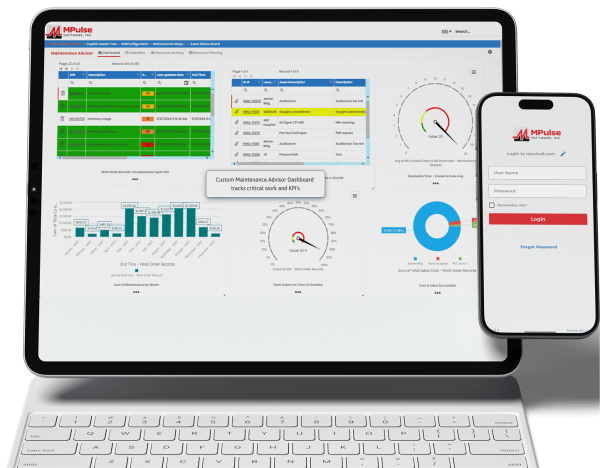Preventive maintenance scheduling is one of the top reasons maintenance departments buy CMMS software. Everyone’s goal is to accomplish achieving 100% Preventative Maintenance completion rate.
Many MPulse customers want a 100% preventive maintenance task completion rate. We asked a new MPulse customer, Matt, how his team achieved it.
Matt’s goal when his organization purchased MPulse was to move from reactive approach to a more balanced proactive approach. With more than 1,200 assets at his company’s plant, however, his old method of spreadsheets and a homegrown database couldn’t get him there.
CMMS software was clearly the way to go. But after buying the software, what’s next to have that success?
Table of Contents
Set Up PM Schedules
Setting up his CMMS software properly was the first step. Matt had some asset information in his old spreadsheets, so that was easily imported into MPulse. He took the time to add new information as well—including warranties and parts information.
Then for each asset, he set up a schedule of PM tasks—changing oil and filters, cleaning vents and screens, inspecting equipment, checking performance metrics, replacing parts, etc.
Here’s the magic of CMMS software. Automated scheduling meant that every time a task was completed, MPulse simply used Matt’s parameters to determine when it needed to happen again in the future. Matt didn’t have to do a thing. The task popped up again at the appropriate time.
“It’s tough to get much easier than that,” he said.
PM scheduling helped in another way as well. Matt’s team spent less time on paperwork—entering information and updating spreadsheets—because everything was captured in one place at one time.
“Not to mention, we had fewer complaints because paperwork is definitely one of the less popular parts of the job,” he said. “Reducing the data entry alone was enough to get the team’s buy-in.”
Spot Issues
After the PM schedules are set up, it was easier for Matt to spot problems with the workflows. Using his MPulse CMMS data, he changed a few things in his department, by…
- Redistributing some tasks to employees with stronger backgrounds in that skill set
- Training other employees so they could take on new and different tasks
- Hiring another tech to focus primarily on PMs for key assets
- Streamlining the inventory ordering process so his techs weren’t waiting for frequently used parts
After a few months, Matt succeeded in his goal to get to 100% PM completion rate. But he also discovered that his metric didn’t give him the whole picture.
Next time, we’ll share another PM performance metric that helped Matt—and can help you too.






